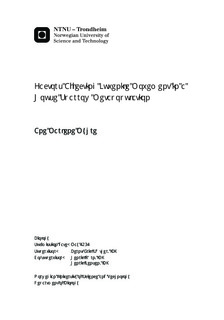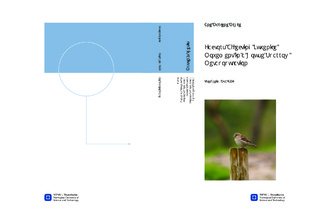| dc.contributor.advisor | Sæther, Bernt-Erik | nb_NO |
| dc.contributor.advisor | Pärn, Henrik | nb_NO |
| dc.contributor.advisor | Jensen, Henrik | nb_NO |
| dc.contributor.author | Myhre, Ane Marlene | nb_NO |
| dc.date.accessioned | 2014-12-19T13:12:47Z | |
| dc.date.available | 2014-12-19T13:12:47Z | |
| dc.date.created | 2013-01-18 | nb_NO |
| dc.date.issued | 2012 | nb_NO |
| dc.identifier | 589673 | nb_NO |
| dc.identifier | ntnudaim:6791 | nb_NO |
| dc.identifier.uri | http://hdl.handle.net/11250/245132 | |
| dc.description.abstract | Dispersal propensity can vary considerably between individuals in a population. Understanding which individuals disperse- and under what circumstances these individuals disperse is valuable for conservation. Factors influencing juvenile movement and natal dispersal were studied in individually marked house sparrows, Passer domesticus, in an archipelago off the coast of Helgeland, northern Norway. Sex, clutch size, body size and body mass did not significantly explain variation in movement. Movement rate was however negatively related to hatch date on one of the islands. Moreover, there was a decrease in movement rate with increasing patch isolation and hostility of the matrix habitat. This study suggests that habitat configuration is an important factor determining movement of juvenile house sparrows, and that the environment experienced early in life may be related to movement propensity. I strongly recommend incorporating landscape features in further analyses of movement and dispersal rate. | nb_NO |
| dc.language | eng | nb_NO |
| dc.publisher | Institutt for biologi | nb_NO |
| dc.subject | ntnudaim:6791 | no_NO |
| dc.subject | MBI Biologi | no_NO |
| dc.subject | Økologi | no_NO |
| dc.title | Factors Affecting Juvenile Movement in a House Sparrow Metapopulation | nb_NO |
| dc.type | Master thesis | nb_NO |
| dc.source.pagenumber | 40 | nb_NO |
| dc.contributor.department | Norges teknisk-naturvitenskapelige universitet, Fakultet for naturvitenskap og teknologi, Institutt for biologi | nb_NO |

